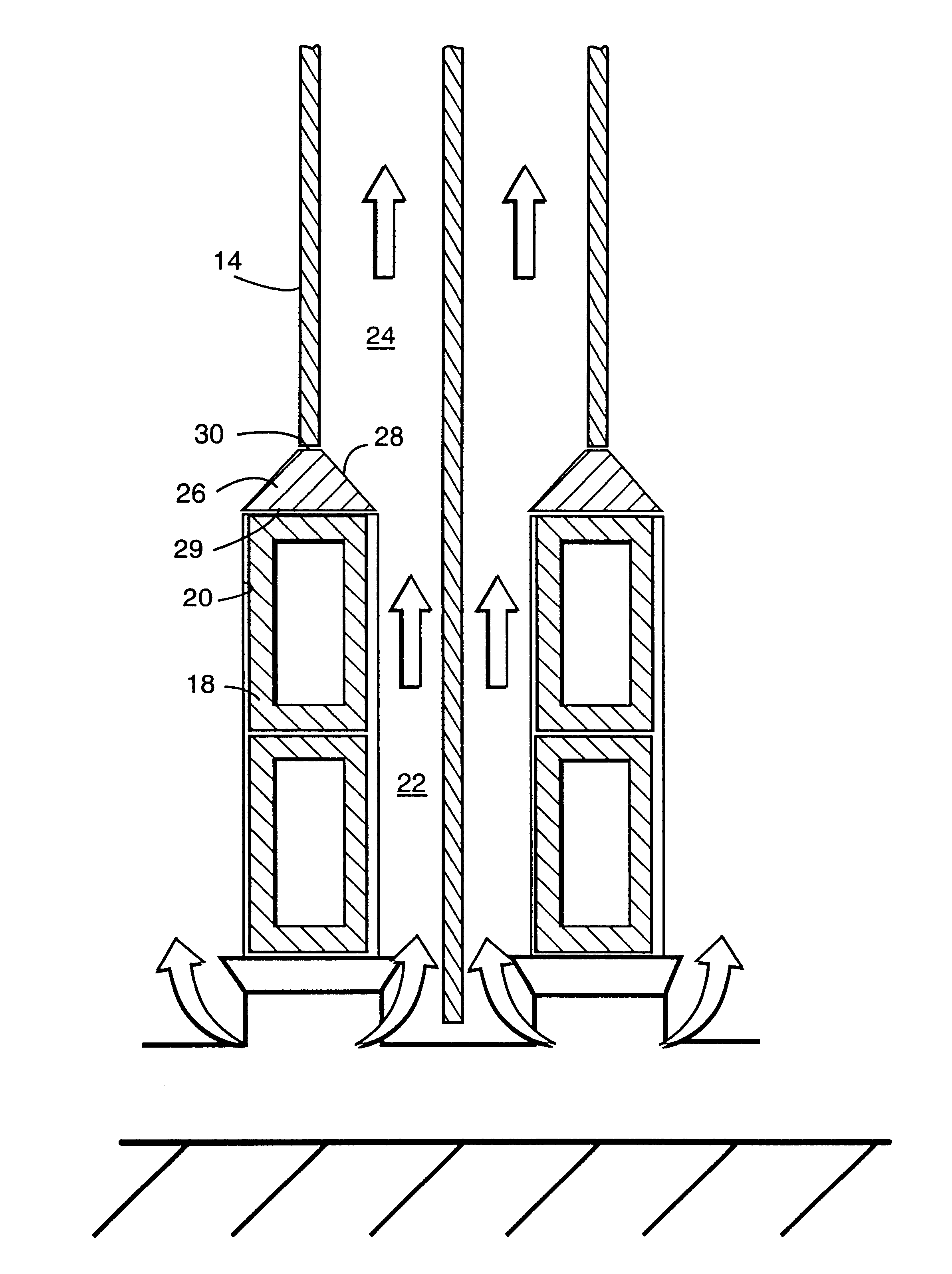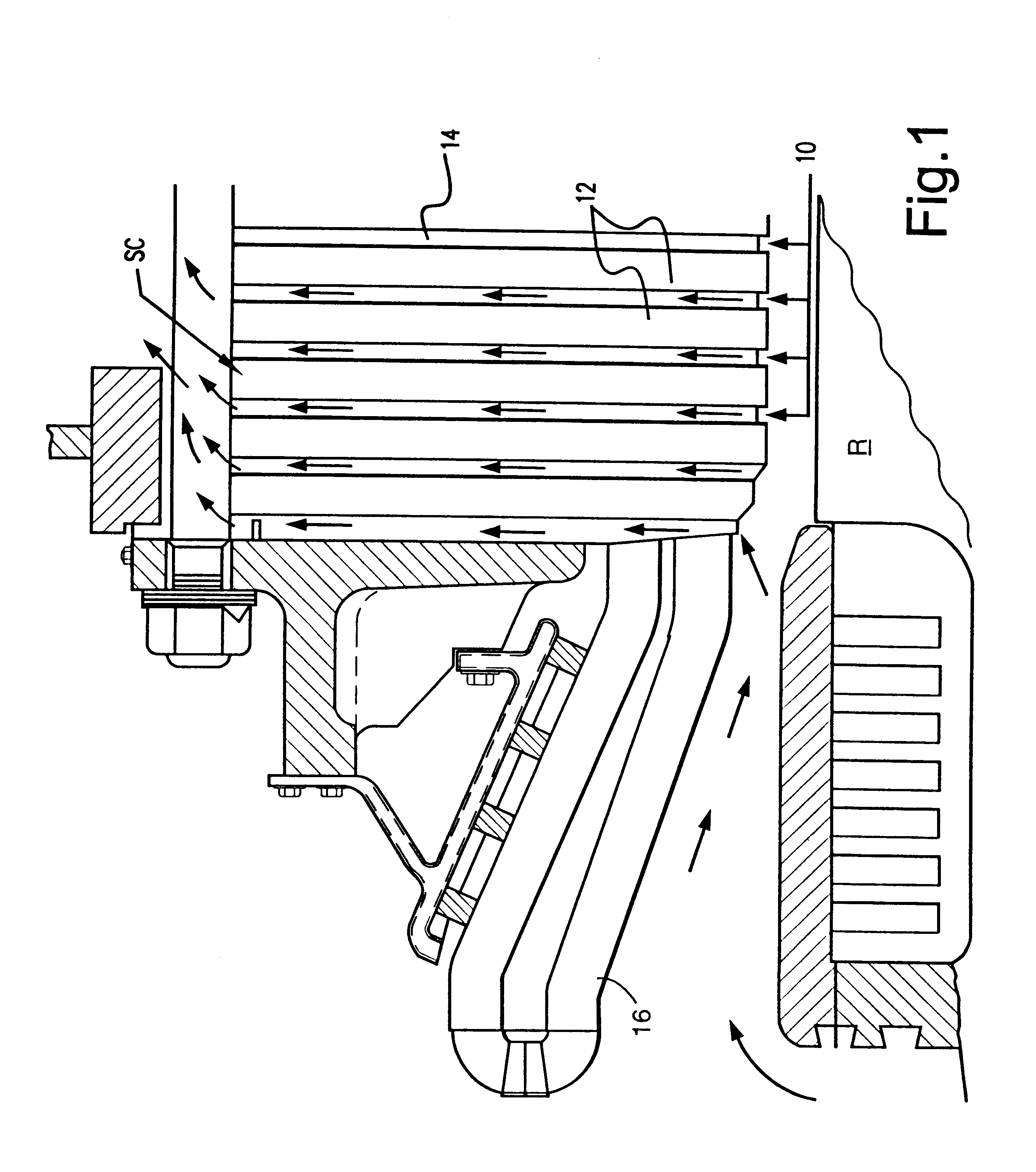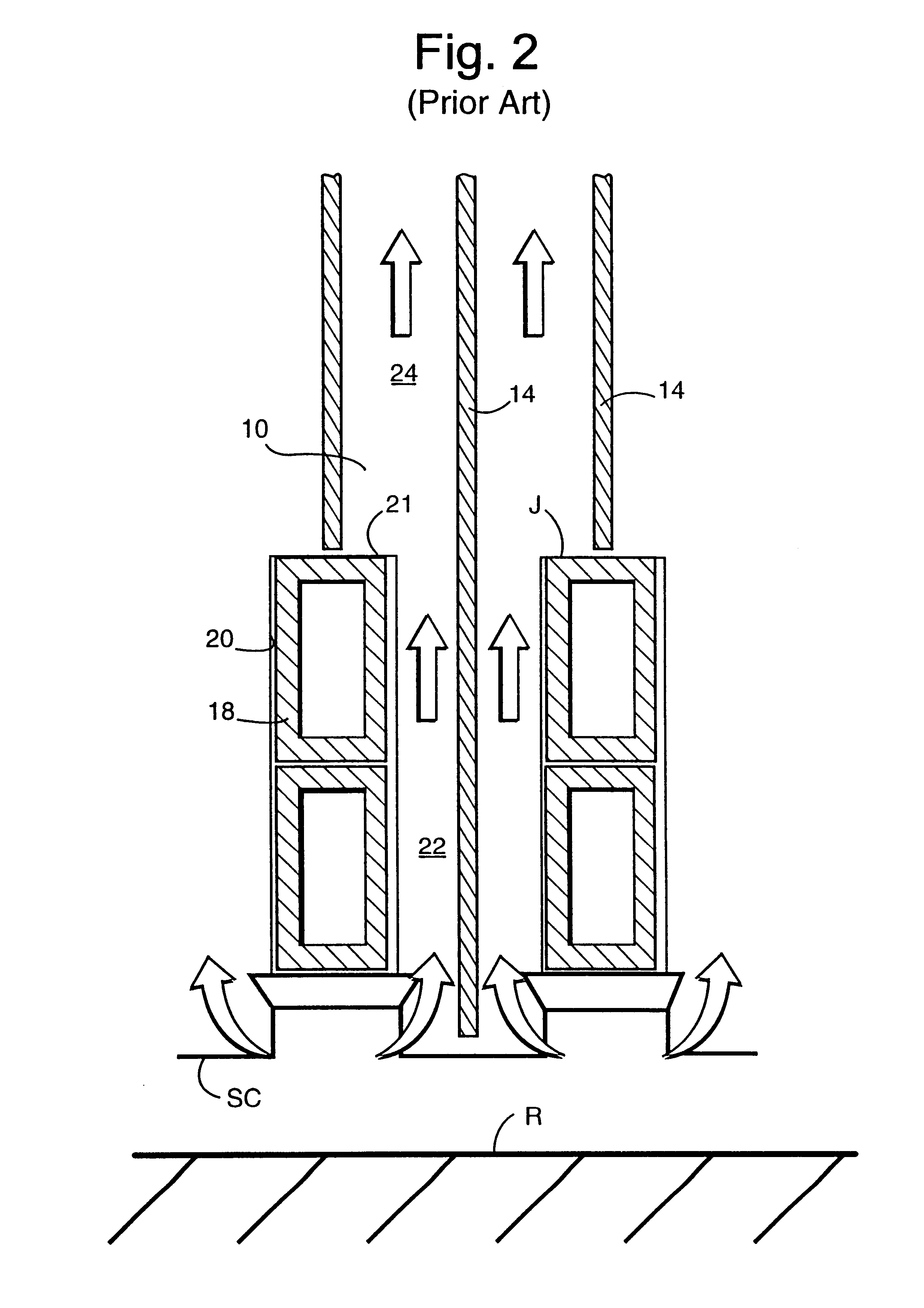Cooling flow gas transition inserts in stator core ducts and methods of cooling a stator core
- Summary
- Abstract
- Description
- Claims
- Application Information
AI Technical Summary
Benefits of technology
Problems solved by technology
Method used
Image
Examples
Embodiment Construction
Referring now to the drawing figures, particularly to FIG. 1, there is illustrated an electrical machine comprised of a stator core SC having generally radially extending stacked layers of magnetic laminations 12. Ventilation ducts 10 are provided at axially spaced positions between groups or sets of laminations 12 and are defined in part by vent duct spacers 14 disposed between the respective groups or sets or laminations 12. Also illustrated in FIG. 1 is a portion of the rotor R and end windings 16 which form the ends of armature bars 18 passing axially through the stator core SC at circumferentially spaced positions in radially extending slots 20 (FIG. 2). The radial slots 20 extend along the inner portions of the stator core and are formed through the laminations 12. Thus, the armature bars 18 extend axially through the laminations, as well as the ducts 10. As illustrated in FIG. 2, the cooling gas in the illustrated form passes generally radially outwardly from between the roto...
PUM
 Login to view more
Login to view more Abstract
Description
Claims
Application Information
 Login to view more
Login to view more - R&D Engineer
- R&D Manager
- IP Professional
- Industry Leading Data Capabilities
- Powerful AI technology
- Patent DNA Extraction
Browse by: Latest US Patents, China's latest patents, Technical Efficacy Thesaurus, Application Domain, Technology Topic.
© 2024 PatSnap. All rights reserved.Legal|Privacy policy|Modern Slavery Act Transparency Statement|Sitemap



